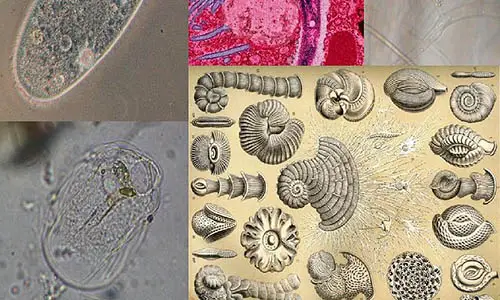The earth consists of millions of organisms both big and small. Each of these organisms further have their own history of existence.
If viruses are not included as live, protists fall under the category of the smallest group of living things.
According to Scientists, protists are believed to have paved the way for evolution of early plants, animals, and fungi. Protists fall into four general subgroups: unicellular algae, protozoa, slime molds, and water molds.
The name Protista means “the very first” and there are 80-odd groups of organisms that are classified as protists. They have been in the evolutionary history as early as 2 billion years. However, Genome analysis of their genomes by biologists shows that they are not really as primitive as they were originally believed.
1. All unicellular organisms, which are not prokaryotes, are classified under Protists.
They have a well-defined nuclear membrane and also contain mitochondria and some have chloroplast.
2. They are found in many different forms.
They are either synsytial or multicellular. They can be found as colonies or as filaments or a leaf like, multicellular structure or body composed primarily of a single undifferentiated tissue.
3. All protists are not microscopic.
Among the brown algal protists, some forms may reach a length of 60 metres or more, although the normal range is 5 micrometres to 2 or 3 millimetres. Some parasitic forms and a few free-living algal protists may have a length of 1 micrometre as well.
4. They can be motile or non-motile.
Many protists are capable of motility by means of flagella, cilia, or pseudopodia. There are other groups of protists which may be non-motile during part or most of the life cycle.
5. Nutrition is by different modes.
Their modes of nutrition include photosynthesis, absorption, and ingestion. Some species exhibit both autotrophic and heterotrophic nutrition.
6. Flagella and cilia are also involved in sensory function
The outer membrane contains several receptors at the molecular level. There are seven kinds of receptors. A variety of chemoreceptors can recognize minute changes in the medium surrounding the organism.
7.Protists also have pseudopodia.
Pseudopodia are responsible for amoeboid movement. This type of locomotion is associated with members of the protist group called the Sarcodina. Pseudopodia are used in both phagotrophic feeding, as well as in locomotion. There are different kinds of pseudopodia. Three kinds of pseudopods (lobopodia, filopodia, and reticulopodia) are similar, and are frequently found among the rhizopodsarcodines, while the fourth type (axopodia) is different. They are more complex, and characteristic of actinopodsarcodines.
8. Respiration is a very simple process.
It is by the direct diffusion of oxygen from the surrounding medium. There are two groups that also exhibit anaerobic metabolism: parasitic forms and some bottom-dwelling ciliates which live in the sulfide zone of certain marine and freshwater sediments.
9. Feeding is through diverse mechanisms.
It is by capture of living prey by the use of encircling pseudopodial extensions. Trapping of food particles in water currents, is by filters formed of specialized buccal organelles and by simple diffusion of dissolved organic material through the cell membrane. In the case of Parasiticprotists, it is by sucking out of the cytoplasm of host cells.
10.There are different methods by which protists reproduce.
Reproduction is by binary fission, multiple fission or by conjugation.
11. Some major diseases of humans are caused by protists
Malaria is caused by a protozoan protist of the phylum Sporozoa .Various trypanosomiases (e.g. sleeping sickness) and leishmaniasis are due to different protists
12.Protists are used as cell models in biological research
Unicellular free-living protists can be cultured easily and hence are invaluable as assay organisms and pharmacological tools. The best example is the ciliate Tetrahymena, which serves as a model in cell and molecular biology.









Leave a Reply